Choosing the right wood stain can affect the final appearance of your project with its lifespan.
Have you stained something only for it to peel, fade, or seem wrong? Achievement of your desired color is not all that the best wood stain is about for you.
It merges reliable color matching your vision as well as easy application, saving you frustration, plus great durability, withstanding daily wear.
We will assess wood stains that perform well within many groups.
Also, we are going to have to do a comparison of all of their strengths in addition to weaknesses, which could then help you to perfectly select some options for the needs of your specific project.
Understanding Wood Stains
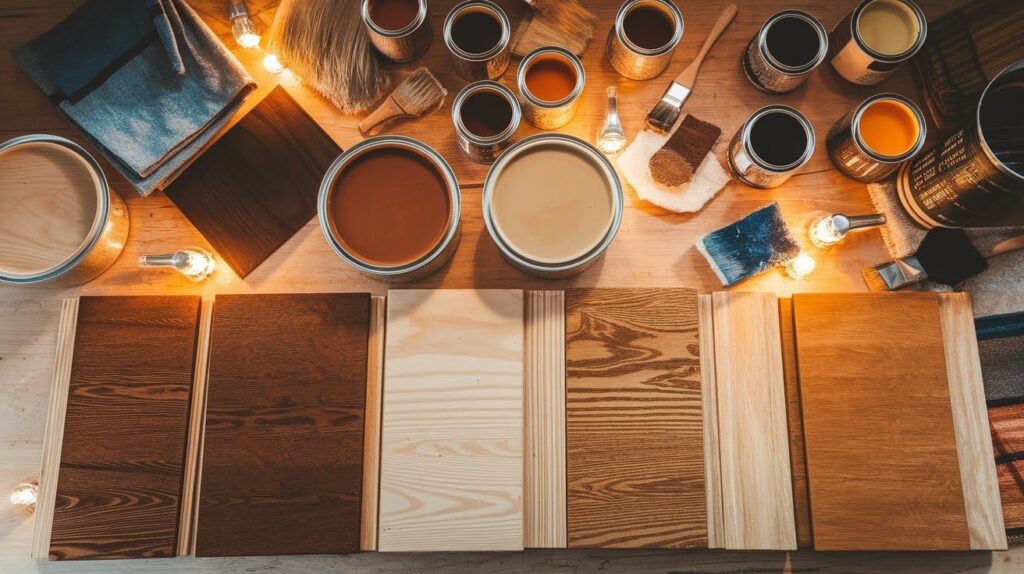
Wood stains come in three main types with distinct advantages. Oil-based stains penetrate deeply and provide rich, durable color.
Water-based stains dry quickly and clean up easily with soap and water. Gel stains have a thick consistency that prevents dripping on vertical surfaces.
Transparency levels control how much wood grain shows through. Solid stains provide complete coverage like paint.
Semi-transparent options allow some grain to show while adding color. Transparent stains enhance natural wood with subtle tinting.
Several factors affect your final results. Different wood species absorb stain differently, creating even or blotchy coverage.
Natural grain patterns influence color distribution. Room lighting and humidity change how colors appear. Your application tools, like brushes or rags, impact smoothness and coverage quality.
Expert Review – Best Wood Stain Picks
We tested top wood stain brands to find which ones deliver lasting color, easy application, and real protection for your projects.
Minwax
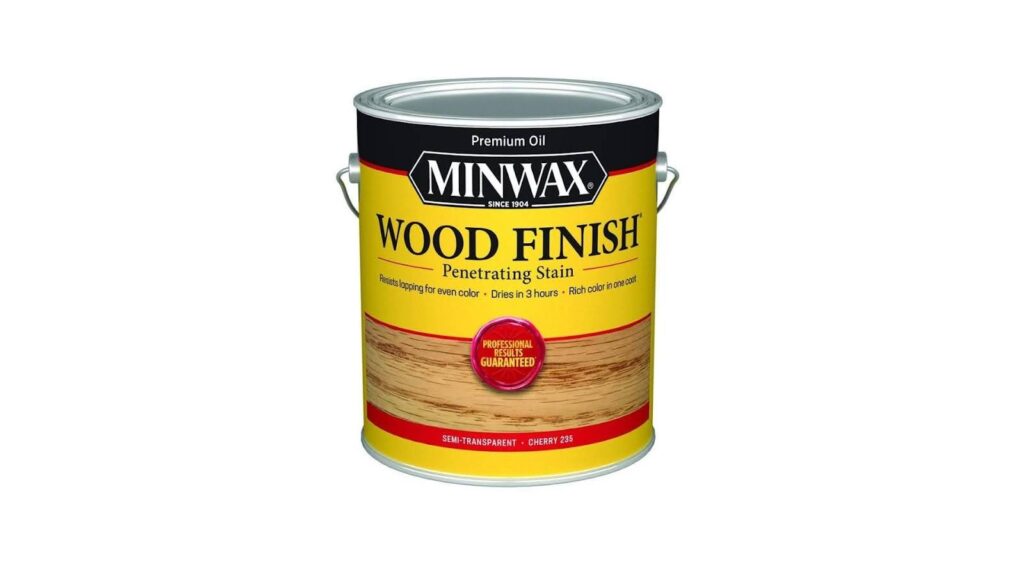
Special Walnut offers a rich, versatile semi-transparent finish that works on multiple wood types.
Dark Walnut delivers deep brown tones with natural undertones, perfect for oak and maple. Jacobean creates a cozy, farmhouse-friendly look that’s incredibly popular.
Minwax excels at interior projects like furniture refinishing, cabinets, and hardwood floors. The oil-based formula penetrates deeply and provides consistent, long-lasting color.
Pros: Excellent color consistency, deep penetration, wide color selection, reliable results across different wood species.
Cons: Strong odor requires good ventilation, longer drying time (8-12 hours), oil-based cleanup needs mineral spirits.
Varathane
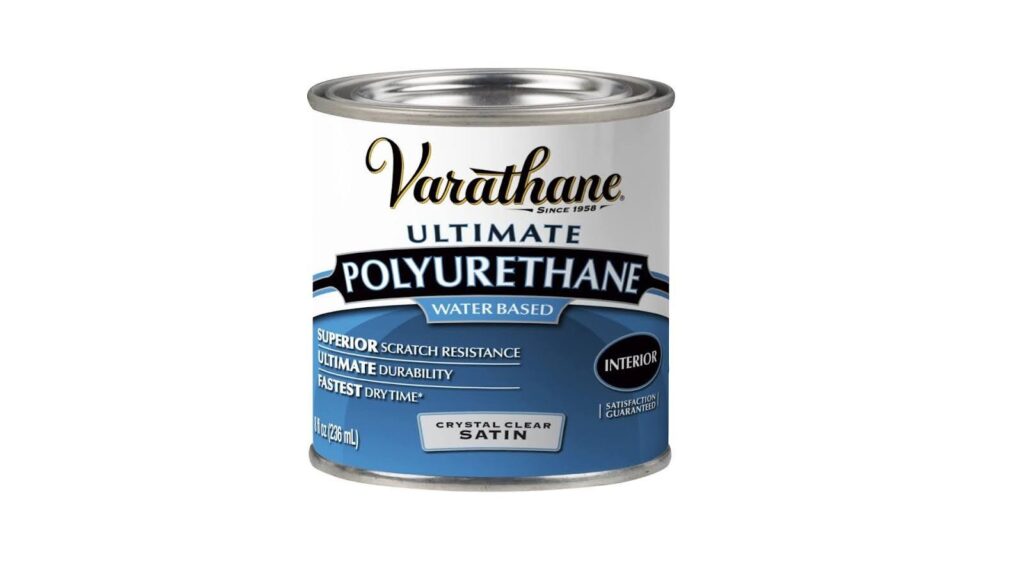
Golden Pecan provides a light, honey-toned finish that highlights natural grain beautifully. The water-based formula dries within two hours, allowing multiple coats in one day. Cleanup requires only soap and water.
Varathane works best for interior furniture and trim work. The low odor makes it ideal for occupied spaces, delivering professional results without strong fumes.
Pros: Fast drying time, low odor, easy water cleanup, safe for indoor use with people present.
Cons: Less durable than oil-based options, may raise wood grain requiring light sanding, fewer color options available.
DEFY
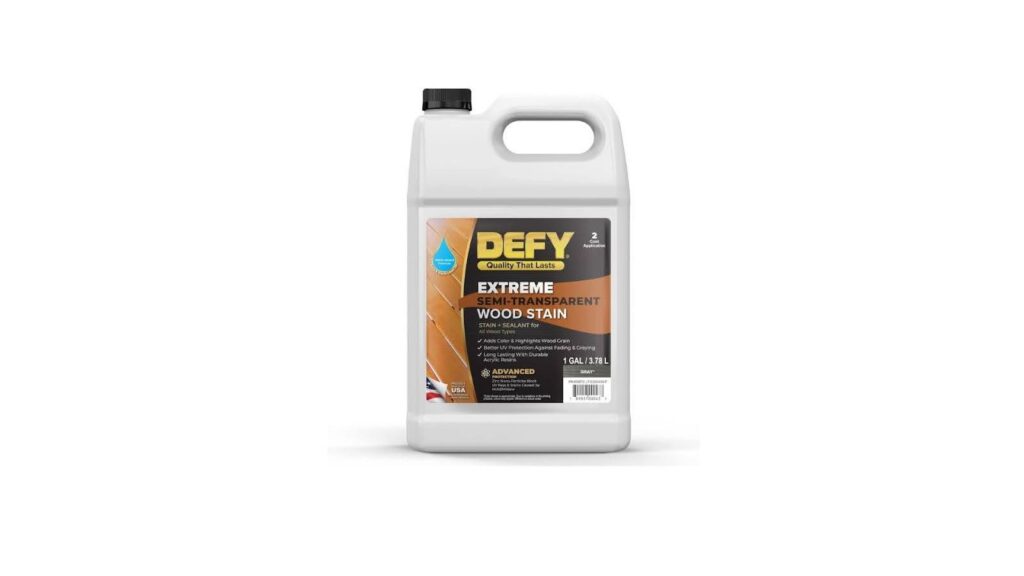
Extreme Semi-Transparent in Light Walnut offers superior weather resistance and deep penetration. Built-in UV protection prevents sun damage and keeps wood looking fresh for years.
DEFY is designed for exterior projects like decks, fences, and siding. The zinc oxide particles provide exceptional protection against moisture and sun.
Pros: Outstanding UV protection, excellent weather resistance, long-lasting performance (3-4 years), and prevents wood graying.
Cons: Higher price point, limited color selection, requires proper surface preparation for best results.
Valspar
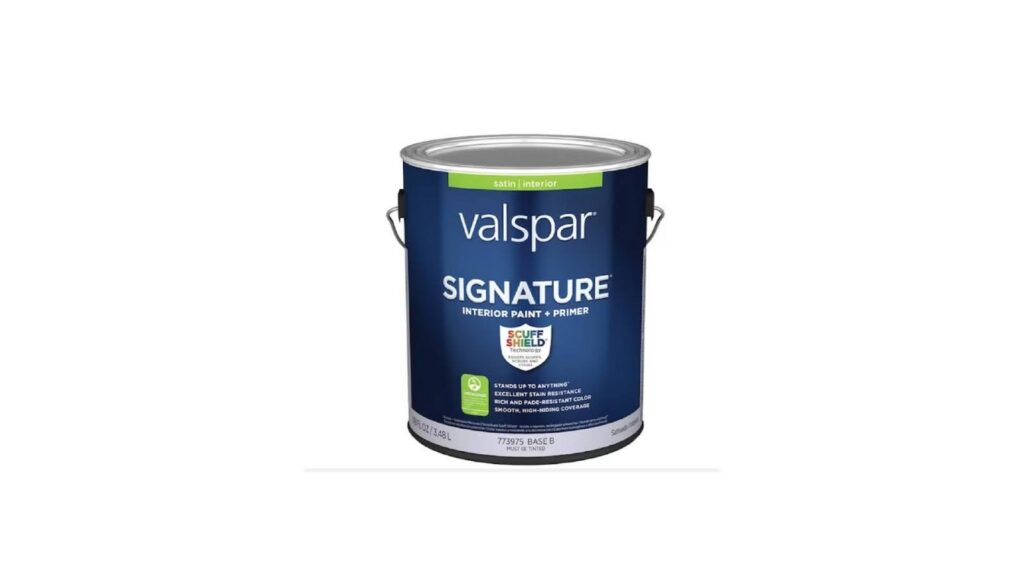
One-Coat Semi-Transparent in Pinebark delivers excellent coverage in a single application. The formula includes mildew resistance, crucial for humid climates or shaded areas.
Valspar works well on outdoor furniture, fences, and sheds. The one-coat coverage saves time and money, balancing performance with affordability.
Pros: True one-coat coverage, mildew-resistant formula, easy application, good value for money.
Cons: Color options are limited, not as durable as premium brands, may need reapplication every 2-3 years.
Behr
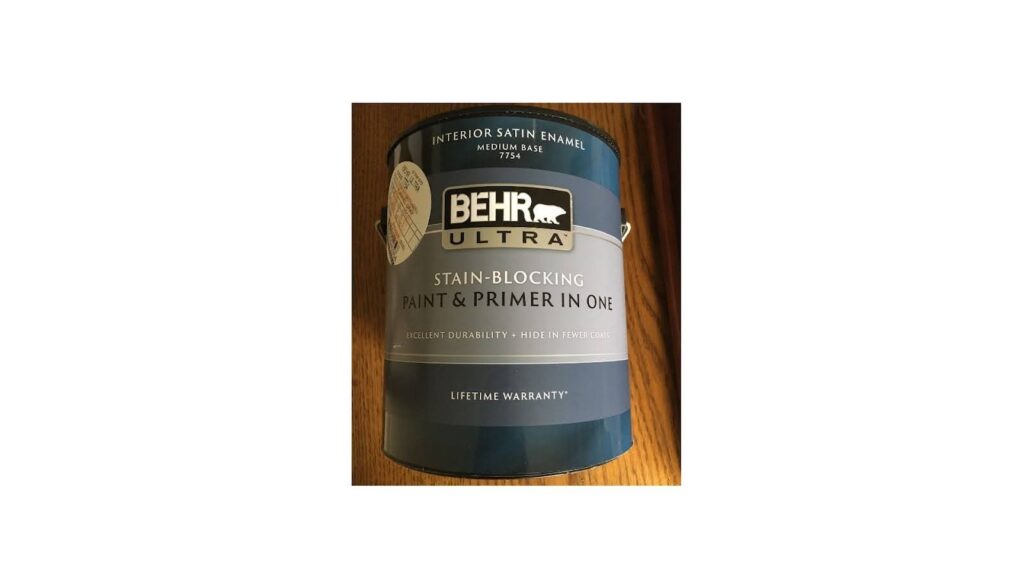
Semi-Transparent Waterproofing Stain combines color and protection in one product. Moderate mildew resistance prevents discoloration in damp environments, and durability holds up to foot traffic.
Behr is ideal for decks, railings, and wood siding. It’s widely available at Home Depot with reasonable pricing for the protection level offered.
Pros: Widely available, reasonable pricing, good waterproofing, decent mildew resistance.
Cons: Moderate durability (2-3 years), can be inconsistent between batches, limited color depth compared to premium brands.
Ready Seal
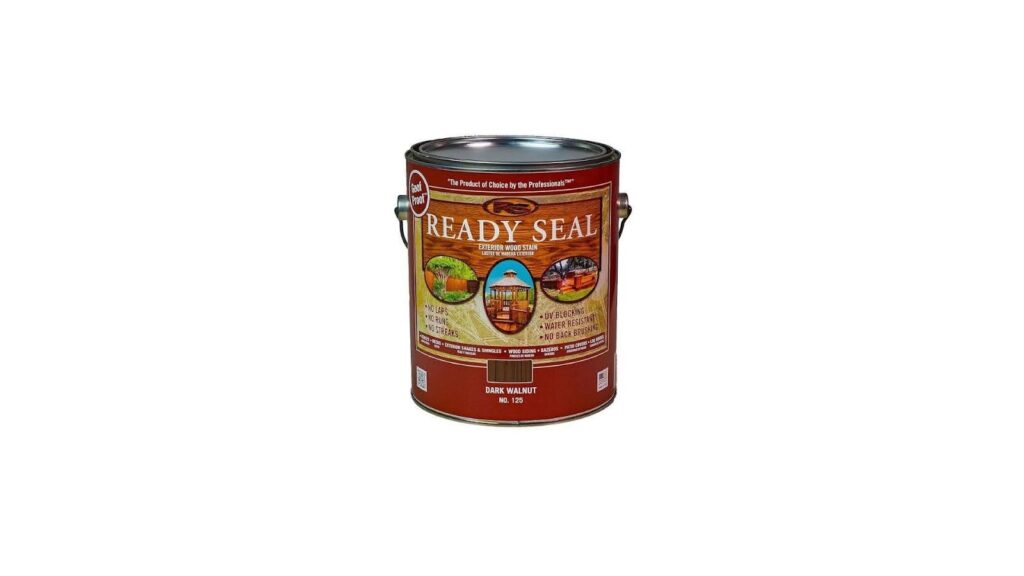
Semi-Transparent Oil-Based Stain minimizes cracking because it penetrates rather than sits on the surface. Recoating is simple without stripping or sanding between applications.
Ready Seal suits budget-friendly exterior projects like fences and sheds. The no-run formula works with rollers, brushes, or sprayers, making it forgiving for DIYers.
Pros: No-drip formula, easy recoating process, forgiving application, budget-friendly, works with multiple application methods.
Cons: Limited color range, shorter lifespan (1-2 years), and thinner consistency may require two coats on porous wood.
Stains to Avoid
Thompson’s WaterSeal creates uneven coverage and poor color retention, often fading within the first year. Many users must reapply annually.
Helmsman Spar Urethane produces a thick, plastic-like finish that obscures wood grain. The application is difficult, and the glossy surface looks artificial. It works better as a topcoat than a standalone product.
How to Choose the Best Wood Stain for Your Project
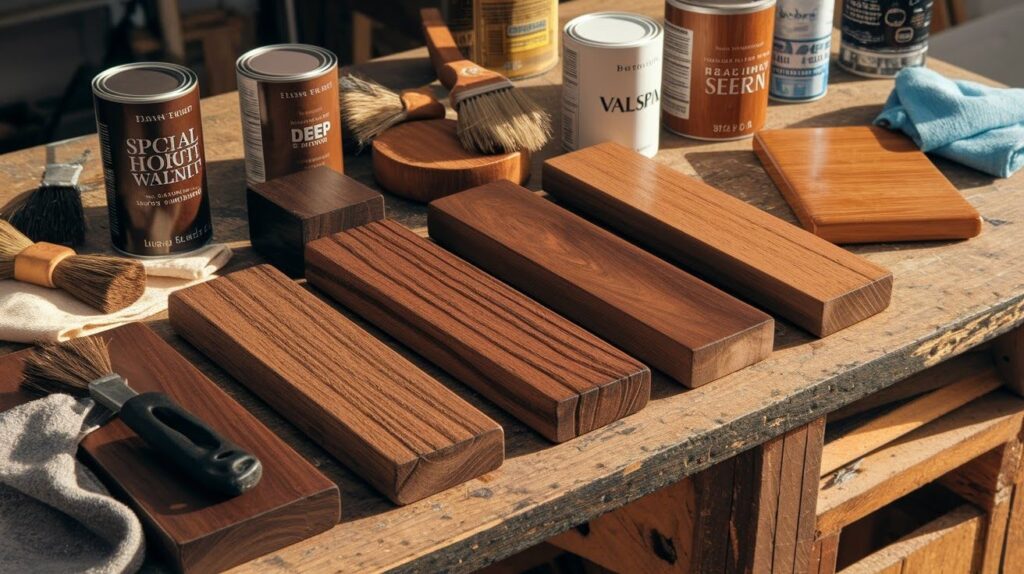
Selecting the right wood stain depends on your project type, wood species, desired finish, and whether it’s for indoor or outdoor use.
Consider Your Wood Type and Location
Different woods accept stain differently, affecting your final results. Cedar resists penetration and works best with semi-transparent options.
Pine absorbs unevenly, creating a blotchy appearance without proper preparation. Oak’s prominent grain shows beautifully with transparent stains.
Decide on Finish and Transparency
Solid stains provide complete coverage but hide natural grain patterns. Semi-transparent options offer good color while showing some grain.
Transparent stains enhance wood’s natural beauty with subtle tinting. Your choice affects both appearance and maintenance requirements.
Durability vs. Maintenance
Water-based stains typically last 2-4 years before needing reapplication. Oil-based options provide 3-6 years of richer, deeper protection.
Most projects require light sanding between coats for adhesion. Higher-quality stains often justify their cost with a longer lifespan.
Pro Tips for Applying Wood Stain Like an Expert
- Sand wood surfaces progressively from coarse to fine grit, then clean all dust and debris thoroughly.
- Apply wood conditioner on soft woods like pine to prevent blotchy absorption and allow proper drying time.
- Use natural bristle brushes for oil-based stains and synthetic brushes for water-based formulas.
- Wipe excess stain with cotton rags to create smooth, even coverage across all surfaces.
- Apply single coats for lighter tones or double coats for deeper, richer color intensity.
- Cover outdoor stained surfaces during harsh weather and inspect annually for damage signs.
- Clean surfaces gently before reapplying stain and refresh high-traffic areas more frequently.
Conclusion
Choosing the best wood stain becomes easier once you test samples first along with a comprehension of your project’s specific needs. Because of how every wood species reacts differently, pine can look completely different when compared to oak.
Apply small test patches before committing to your entire project. It should be done in hidden areas first.
Today, start your staining project confidently, because you know expert guidance is available for you to achieve professional results that will last for years.
Frequently Asked Questions
How long should I wait between stain coats?
Most stains require 4-6 hours between coats. Oil-based stains need longer drying time than water-based formulas.
Can I apply stain over existing stain without stripping?
You can restain over similar or darker colors. Lighter colors usually require complete removal for proper adhesion.
Why did my stain turn out blotchy and uneven?
Blotchy results occur on soft woods without pre-conditioning. Always use wood conditioner on absorbent species.
How do I fix a stain that dried too dark?
Sand lightly with fine-grit paper to remove color. Alternatively, use wood bleach before restaining.
What’s the difference between stain and paint for wood protection?
Stain penetrates wood to enhance grain with some protection. Paint creates surface barriers with superior weather resistance.

